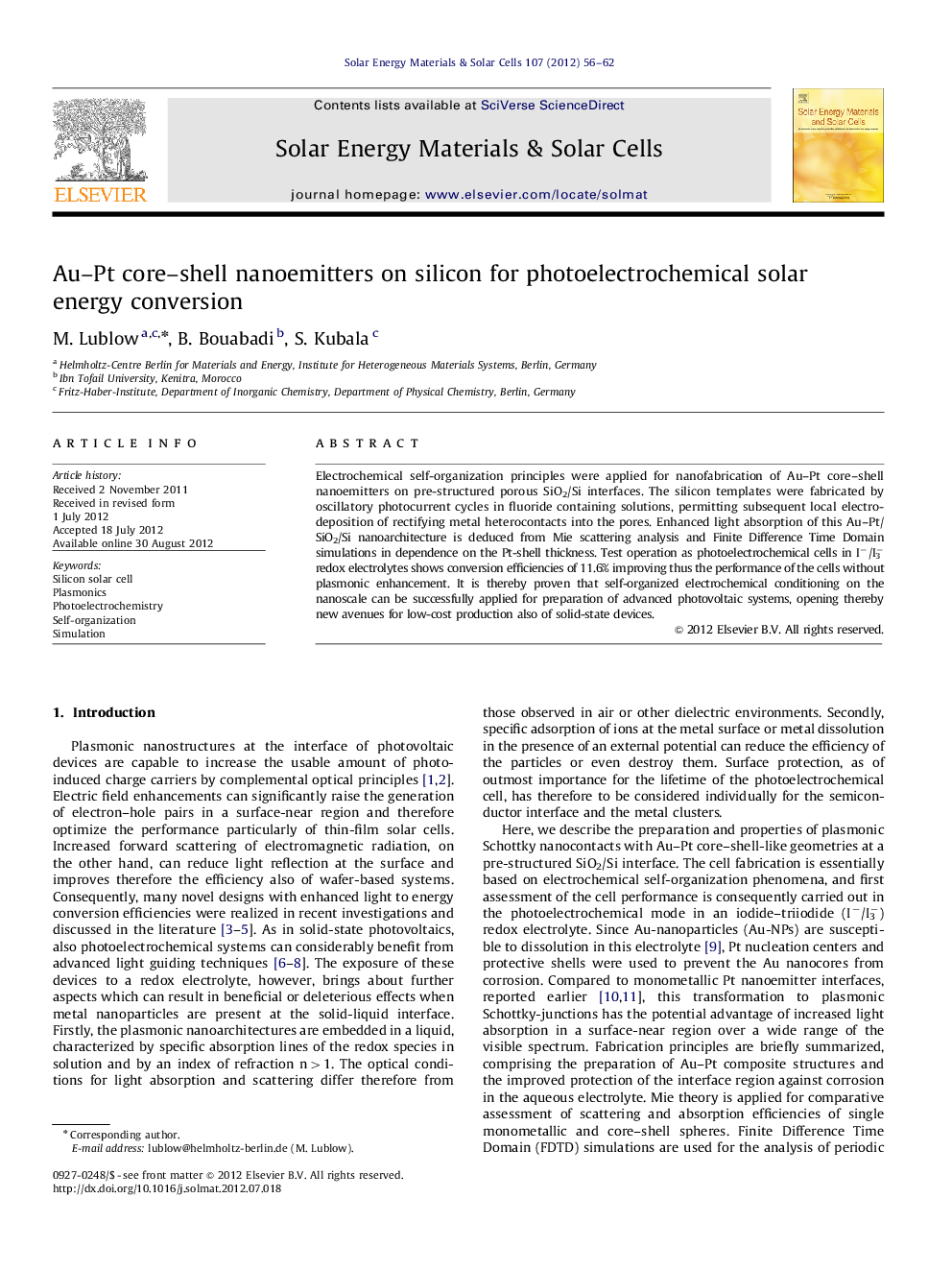| Article ID | Journal | Published Year | Pages | File Type |
|---|---|---|---|---|
| 78892 | Solar Energy Materials and Solar Cells | 2012 | 7 Pages |
Electrochemical self-organization principles were applied for nanofabrication of Au–Pt core–shell nanoemitters on pre-structured porous SiO2/Si interfaces. The silicon templates were fabricated by oscillatory photocurrent cycles in fluoride containing solutions, permitting subsequent local electrodeposition of rectifying metal heterocontacts into the pores. Enhanced light absorption of this Au–Pt/SiO2/Si nanoarchitecture is deduced from Mie scattering analysis and Finite Difference Time Domain simulations in dependence on the Pt-shell thickness. Test operation as photoelectrochemical cells in I−/I3− redox electrolytes shows conversion efficiencies of 11.6% improving thus the performance of the cells without plasmonic enhancement. It is thereby proven that self-organized electrochemical conditioning on the nanoscale can be successfully applied for preparation of advanced photovoltaic systems, opening thereby new avenues for low-cost production also of solid-state devices.
► A low-cost plasmonic silicon solar cell design is presented. ► Core–shell Schottky junctions were prepared by electrochemical methods. ► Careful optical analysis is provided. ► The cell was successfully tested as photoelectrochemical device.
